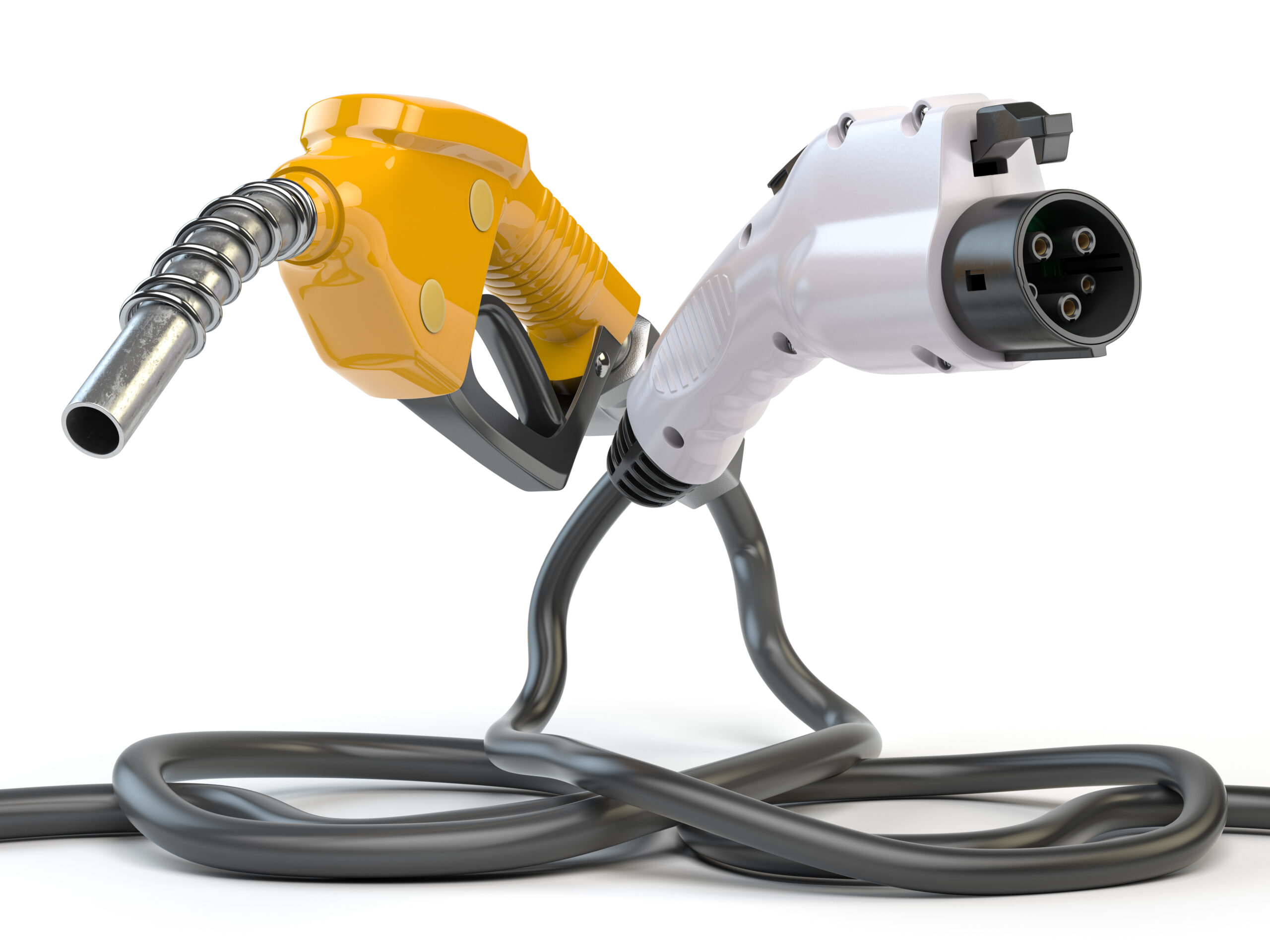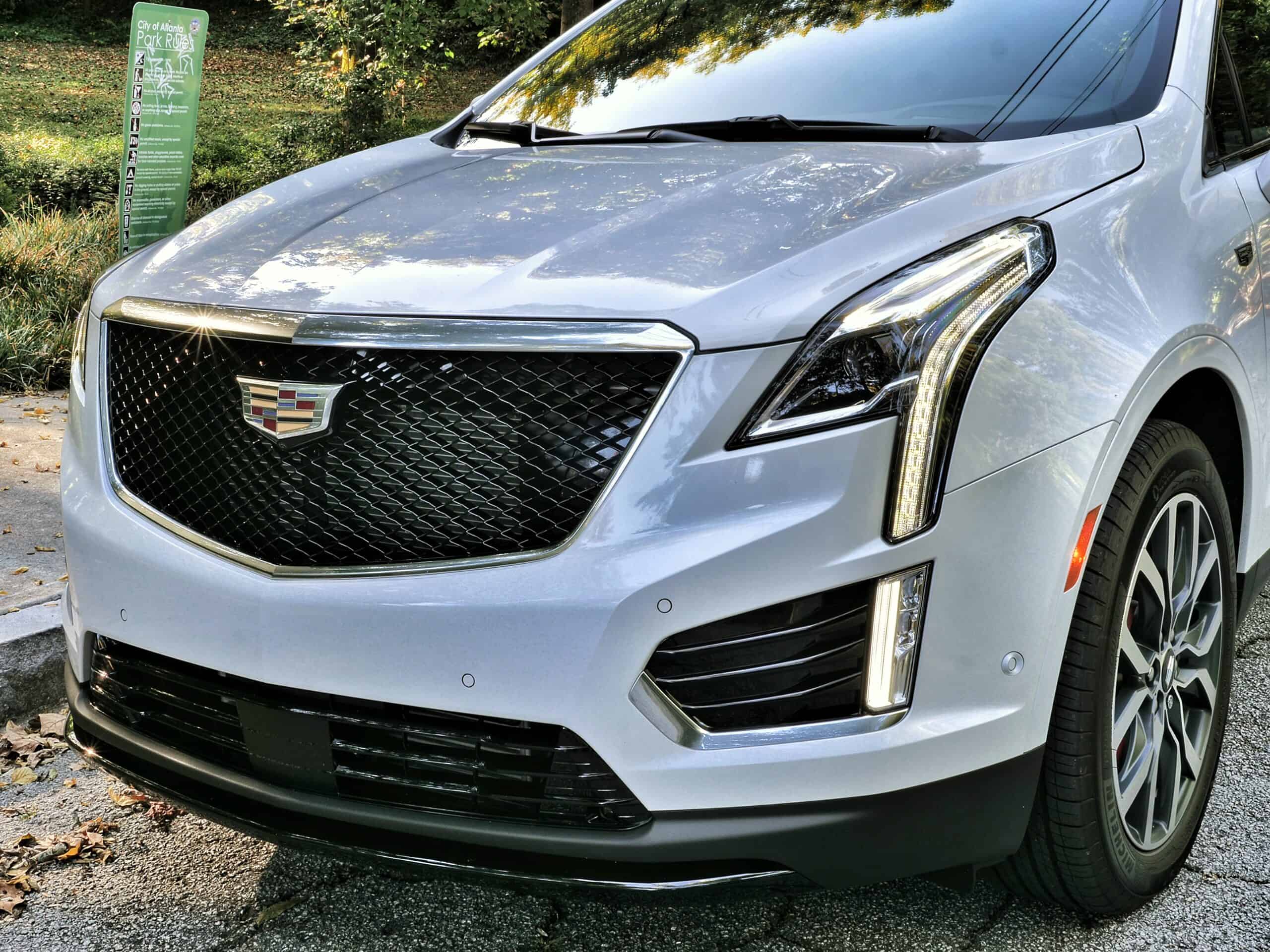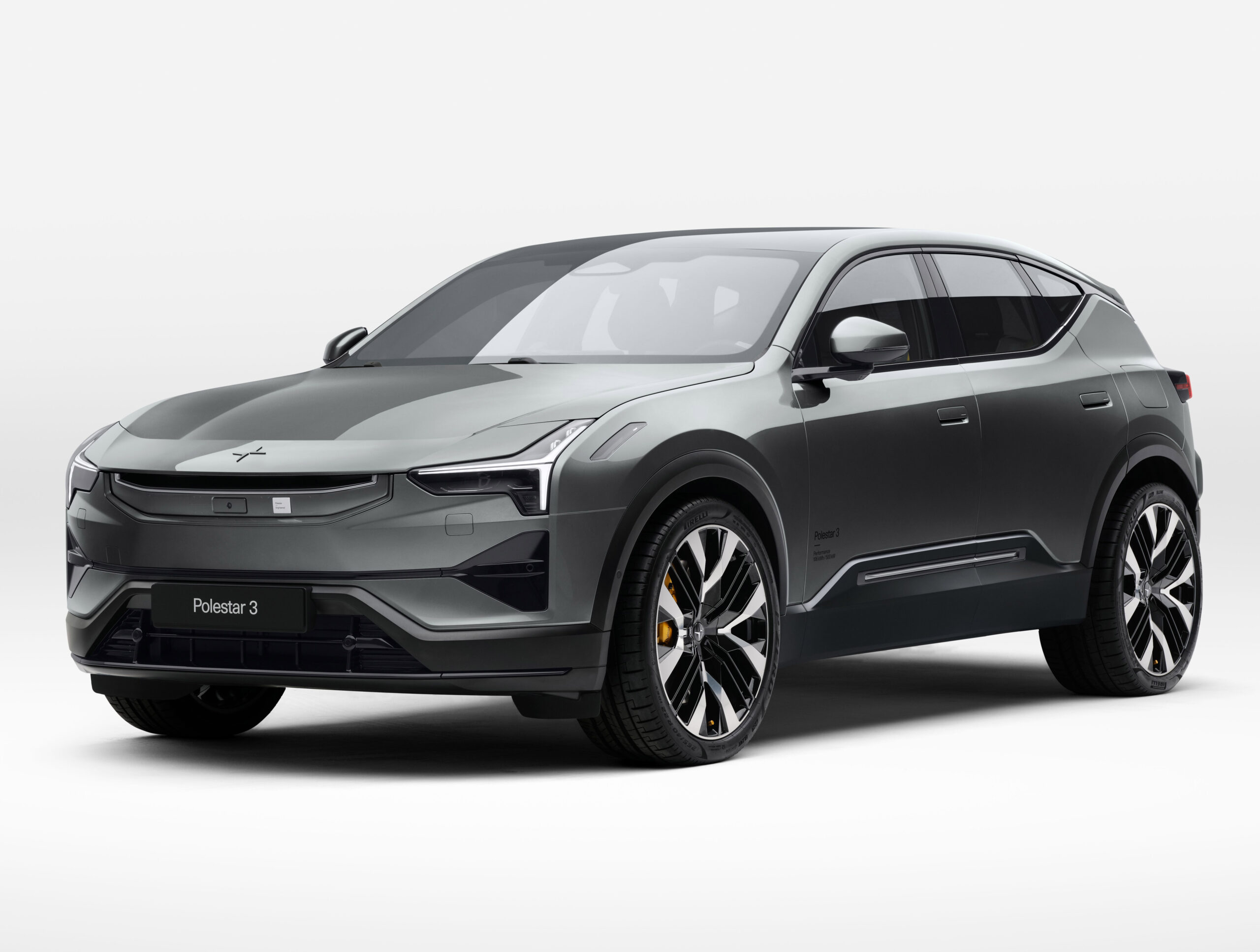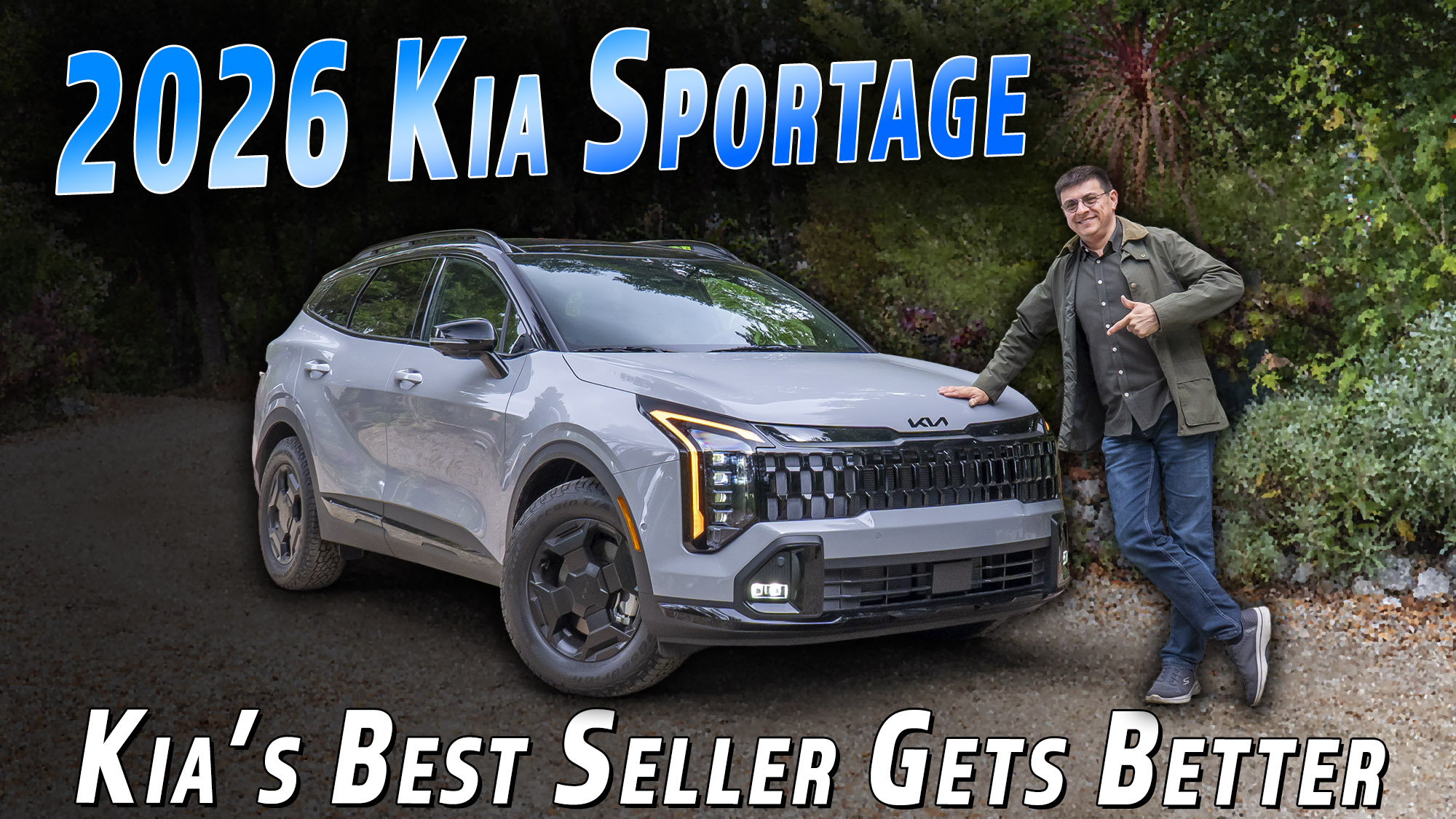

The Cadillac XT5 is front-wheel drive-based two-row luxury crossover that competes with the likes of the Lexus RX and Lincoln Nautilus. If you want to broaden that list, you could include things like the Genesis GV70, Alfa Romeo Stelvio, Audi Q5, BMW X3, and Acura RDX. Its size makes it hard to pin it down, as it falls right in the middle of something like a GV70 and GV80, though it is priced more like the latter. A replacement for the long-running SRX, this first generation has seen some positive updates since its inception in 2016, but does it hold its own in 2022?
The XT5 Sport is the top trim in the lineup, accented by gloss black window trim and roof rails, clear Euro-style taillights, red-painted Brembo brake calipers, and 20″ wheels (the largest you can get on an XT5). There are four design options from the factory, these are the 12-spoke with Dark Android inserts. Tire size? 235/55. The Crystal White Clearcoat paint on my tester looked vibrant next to the gloss black elements, and the sharp angles of the car’s design accentuate the quality of the paint. I think the XT5’s overall design is actually still decently attractive six years into this generation, and these elements of the Sport trim do a lot to keep things fresh. Typically, you associate Cadillac with chrome, but I really love the darker theme here.

The angle of the car I dislike the most, however, is the head-on or front 3/4 view. The tall front end feels disconnected from the sharper and more interesting shapes from the a-pillars rearward. Continuing my trend of making far-fetched comparisons to Cadillac design choices, I see Jack Nicholson’s Joker character in this front end. It’s more minivan-like up front than I would like, and the vertical LED daytime running lights don’t do it any favors. Don’t get me wrong, I love Cadillac’s use of the vertical configuration, it just makes the bloated appearance more noticeable in this application. Out back is where I think the XT5 looks the most attractive. It is a modern interpretation of classic Cadillac design cues, and they keep things clean by tucking the rear wiper up under the spoiler. Genesis could take notes here.

The interior of the XT5 is a solid example of previous-generation Cadillac interior design. If you choose the Platinum package, the dashboard gets a leather wrap with elegant stitching, leather seats turn into the semi-aniline variety, the headliner turns into sueded microfiber, and the front and rear floor mats upgrade to the ‘premium’ level. This Jet Black interior color doesn’t show off the different materials and textures that well, but if you choose the Platinum package you also have the choice of the Maple Sugar color. Either way, the seats are comfortable with heating and ventilation, but no massaging function at all. The infotainment system is GM’s excellent system (branded ‘CUE’ here) with snappy responses, wireless Apple CarPlay and Android Auto, and Amazon Alexa built-in. Unfortunately, the screen is minuscule compared to those in the newest competition, and there is no fully-digital instrument cluster on offer at any level. This is an area where I imagine the next-generation model has a real opportunity to jump to the front of the class. Have you seen the Escalade and Lyriq?

For the 2020 refresh, Cadillac added physical controls down by the shifter to let you operate the CUE system without touching the screen. This is where the volume knob and control knobs live. All of the materials and trim on this model are high quality and tightly-screwed together. I never heard any rattling, though the little cubby under the climate control panel is not lined with rubber or felt, so items will shake, rattle and roll around in there.
Cadillac includes this massive ‘UltraView’ panoramic sunroof on Sport and Premium Luxury trims, though it is not available on the base Luxury trim. The front glass panel slides open and there is a power-retracting shade. This really brightens things up inside and makes it feel much larger than it is, especially in the second row. I fit perfectly fine in all three positions at 5’9″, though the smaller Cadillac XT4 is actually a little bit wider than this, so even though it has a smaller footprint, its rear passenger area may feel similar. The outboard positions are heated here, but not ventilated. This particular unit was missing some of the features it was supposed to have due to the chokehold that the chip shortage has had on Cadillac. Keep that in mind if you are looking into the XT5, as you may pay the price for certain features right now (heated/ventilated front seats, head-up display, etc.) but your particular unit may not actually have them equipped.

Because this is a ‘tweener in size, the XT5 has cargo volume numbers that fall in the middle of the two-three row luxury crossover pack. With the second row up, you’ll have 30 cubic feet of space to work with. Use the convenient levers on either side to fold the 60/40 splits down, and you’ll get 63 cubic feet in total. Though the Lincoln Nautilus is about the same size on the outside, it bests these figures by 5.8 and 7.2 cubic feet, respectively. Cadillac includes a rail system with anchors that you can attach accessories to for organizing the cargo space. One of those accessories is stored under the load floor where the spare tire lives, a horizontally-telescoping divider. There is also a tonneau cover, as seen in these photos, but it cannot be stored under the load floor.
GM’s venerable 3.6L naturally-aspirated V6 is the premium option in the XT5 lineup. A 2.0L turbocharged 4-cylinder was added during the 2020 refresh that produces 235 horsepower and 258 lb.-ft. of torque with premium fuel. It is available on the Luxury and Premium Luxury trims. The V6 produces 310 horsepower and 271 lb.-ft. of torque on premium fuel and is available on Premium Luxury and Sport trims. Both can be paired with either front- or all-wheel drive, though the top Sport trim that I’m testing is only offered with the V6 and AWD. Combined fuel economy for the 4-cylinder is 24 mpg if you stick with front-wheel drive, 23 if you go all-wheel. The V6 drops those numbers down to 21 for both. GM’s excellent 9-speed automatic replaced the old Aisin 6-speed unit during the aforementioned refresh.

Not too long ago, the XT5’s naturally-aspirated V6 would have been a very common sight in this segment. A lot has changed, as this is now your last opportunity to get one in a two-row luxury crossover like this. Even the Lexus RX has finally ditched this kind of powertrain. I have to admit, it is a welcome experience compared to all of the turbocharged 4-cylinders I’ve driven recently. Not that they’re bad, but the sound and the grunt this car gives you under acceleration is something that I have longed for in those competitors. Now, if you want that kind of audible and sensory V6 experience, you have to go for something with twin-turbo power like a Genesis GV70/GV80 or Lincoln Nautilus. Cadillac also offers a turbocharged 4-cylinder on the lowest two trim levels, but I would try to get this V6 at all costs unless you are worried about efficiency.
Without any turbos, this is definitely not the most powerful option in this class. I managed the same 6.6-second 0-60 mph time as Alex did back in 2017 even with this newer 9-speed automatic transmission, which does shift very crisply and very quickly. It is one of the shining engineering achievements from GM in the last decade and really makes every car it ends up in feel more engaging. Once it settles down after an acceleration run, it operates inconspicuously in the background to provide a proper luxury driving experience. A higher-performing engine would pair so well with it, so I do hope that is coming for the next generation.

Braking from 60-0 mph took roughly 119 feet thanks to Brembo brakes which are only available on the Sport trim for 2023. Some newer entries have emerged with wider tire options, however, and those are simply going to be able to stop sooner than this because they have more contact with the pavement. How do the brakes feel? There’s a tiny bit of dead travel at the very top of the pedal, but once you’re pushing down fully, the application is very smooth and very linear. No confidence left behind.
Like other GM AWD systems, this one is only part-time. The car defaults to the Touring drive mode, which keeps the rear axle disengaged. AWD, Sport, and Off-Road drive modes activate the rear axle, though I didn’t attempt to take the XT5 off the pavement as I do not believe that is something any owner of this car will ever do (aside from gravel and dirt driveways or parking lots). In terms of how the AWD system contributes to the handling, this feels more like an Acura RDX than anything that is RWD-based. It handles corners quite well, and you can definitely feel the rear wheels pushing you out. The feeling is not as intense as in that SH-AWD RDX, but it is pretty close. An Alfa Romeo Stelvio or BMW X3 will feel a bit more fun in everyday maneuvers simply because the bias is going to the back.

One area where I really wish Cadillac would just pick a lane is in ride quality. Up until the Lyriq came out, pretty much everything they built had a sporty and firm European-inspired ride. That holds true with the XT5, which doesn’t necessarily feel disjointed or bone-rattling, but it is not what I expect when I hop into a Cadillac. Even with the Chassis-Dampening control that this Sport trim with the Platinum package gets, I still longed for more of a magic carpet-like ride. I want all of the planes of motion to be buttoned down while also providing a softer experience. The Lincoln Nautilus does a better job of this, and the new Lyriq gives us a glimmer of hope that, at least on the electric side, Cadillac might be returning to its roots in this way. We will have to see if that also applies to the next-gen ICE XT5.
Fuel economy is the main reason you would want to go with the lower trims of the XT5 or with a competitor that has a turbocharged 4-cylinder. Take Genesis, for example. Its base 2.5L turbo-4 produces more horsepower and torque than this 3.6L V6, all while managing better fuel economy. It’s the reason Lexus has made the switch – better efficiency and reduced emissions. In my 40-mile test loop, a good mix of city and highway driving, I only managed 18 mpg. That’s actually the same number I got in the much larger Chevy Traverse with the same engine/transmission pairing, surprisingly. A counterpoint to getting the 4-cylinders would be regarding the sound this thing makes. It’s much more mature and fitting of a car at this price than any turbo 4-cylinder. At 50 mph, I measured about 70 dB in the cabin. Cadillac does utilize a lot of sound-deadening measures, but not active noise cancellation like you’ll find in the latest Genesis crossovers.
Bottom line, 2017 was a long time ago in the automotive industry, and a lot has changed since the XT5 first came out as a replacement for the SRX. Excellent newcomers have popped up and set the industry on fire, while the established players have all raised the bar in their most recent iterations. Right now, the only reason you should really consider the XT5, especially in this Sport trim, is if you like the sportier European ride quality and prefer an American-made experience. If you want higher performance in a similar package, the Lincoln Nautilus is just as old and American in its execution, but with a more comfortable tune and a more powerful twin-turbo V6 for about the same price. You’re not choosing a car with any major flaws in the XT5, but value-wise there are a lot of options that feel more modern, more dynamic, and more interesting for the same or less than the roughly $72k you’ll spend on this. Just like the Chevy Traverse I just tested, I believe your best bet would be to wait and see what Cadillac has up their sleeves for the incoming redesign.



